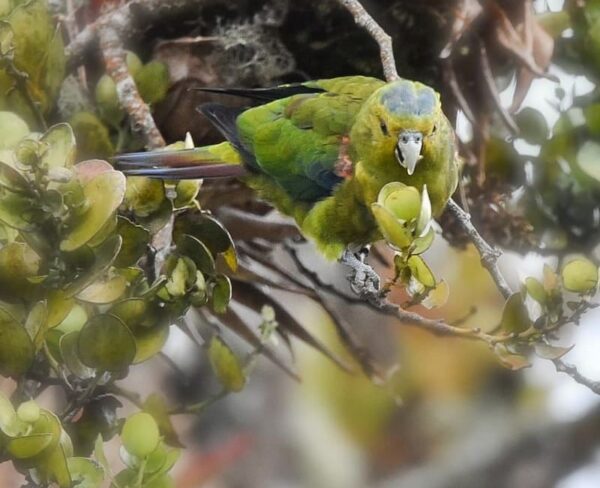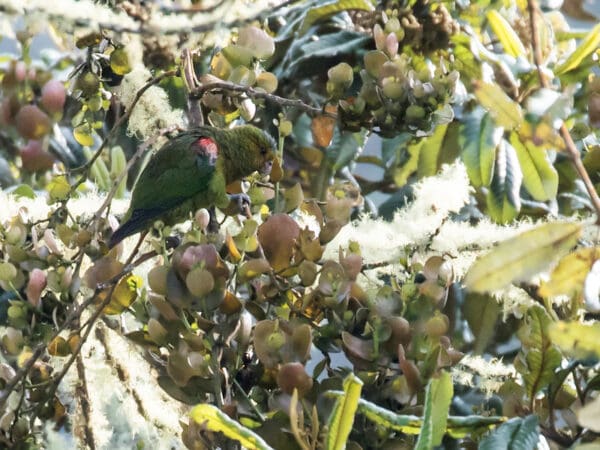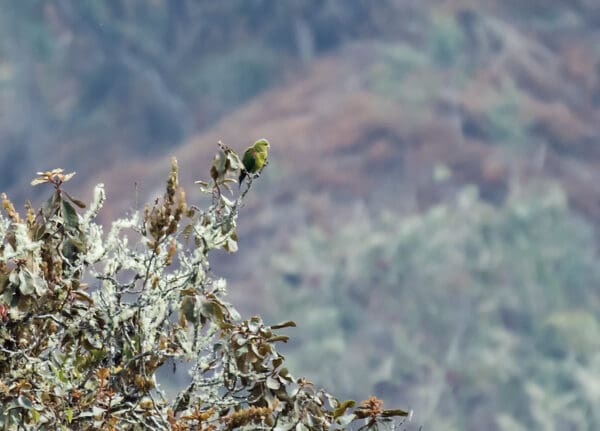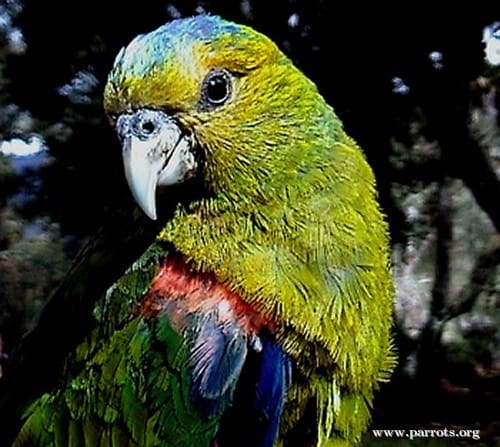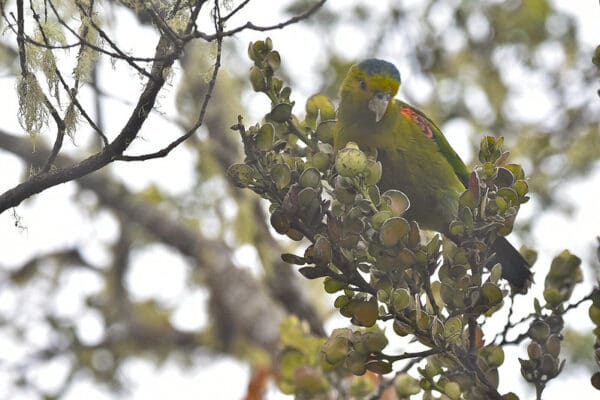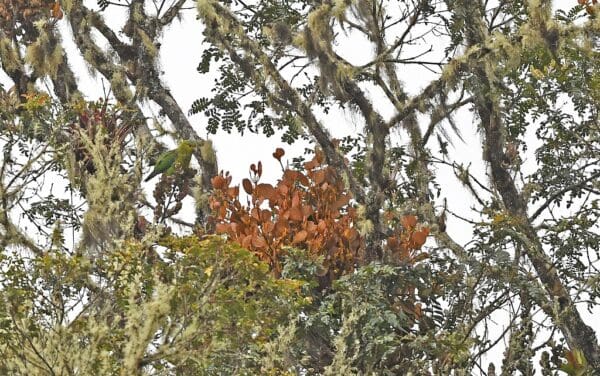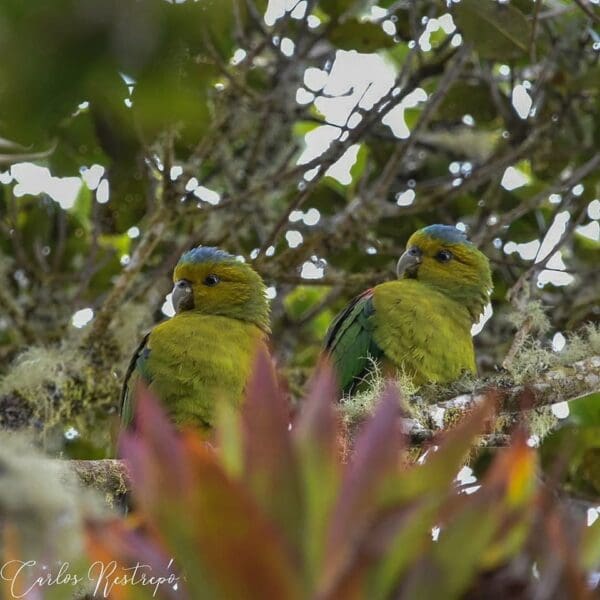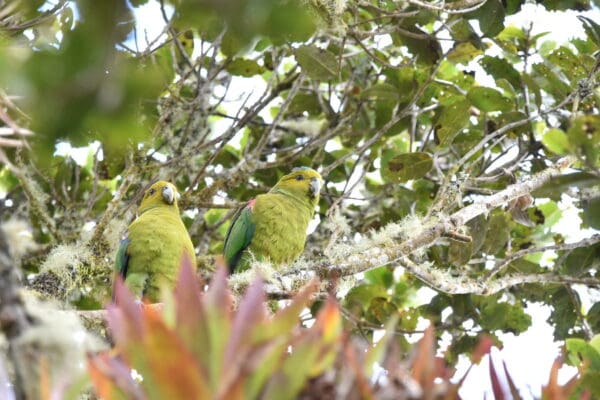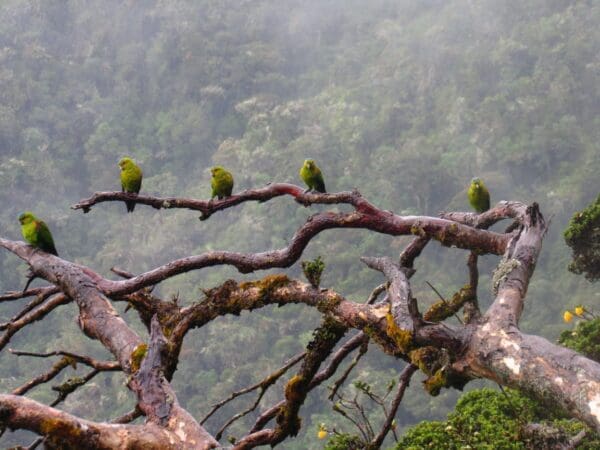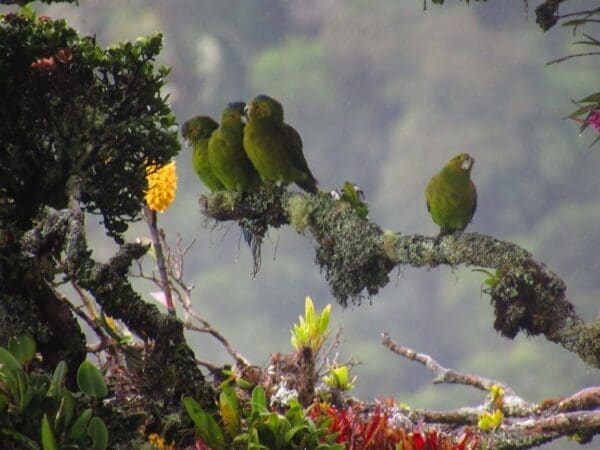Indigo-winged Parrot
Also known as:
Fuertes' Parrot, Azure-winged Parrot
Also known as:
Fuertes' Parrot, Azure-winged Parrot
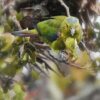
![© Nick Athanas [CC BY-NC-SA 2.0] via Flickr A wild Indigo-winged Parrot feeds on fruit](https://parrots.org/wp-content/uploads/2023/01/wpt_Indigo-winged-Parrot_1399-4-100x100.jpg)
![© Nick Athanas [CC BY-NC-SA 2.0] via Flickr A wild Indigo-winged Parrot perches high in a tree](https://parrots.org/wp-content/uploads/2023/01/wpt_Indigo-winged-Parrot_1399-3-100x100.jpg)
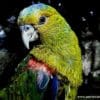
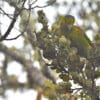
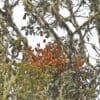

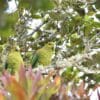
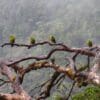

DID YOU KNOW?
The Indigo-winged Parrot was re-discovered after it was thought to be extinct in the wild.

Hapalopsittaca

fuertesi
Size:
23 cm (8.9 in)
Weight:
126 g (4.4oz)
Subspecies including nominate:
One
Colour Adult:
Both adults: narrow dull red stripe across front; forehead, green/yellow lores and around eyes to ear coverts; chin and area in front of cheeks green; crown blue; various dull red feathers on abdomen; bend of wing to lesser wing coverts, carpal edge and lesser underwing coverts dark red; tail brown/red tipped with purple/blue. Beak horn-coloured with blue/grey at base of upper mandible. Eye green/yellow.
Colour Juvenile:
As in adults but with red frontal stripe absent; duller in colour; crown green slightly washed with pale blue; bend of wing to lesser wing coverts, carpal edge and lesser underwing coverts darker red. Eye grey.
Call:
Somewhat squeaky; reminiscent of shore and sea gulls.
More Information:
WPT-supported project – Indigo-winged Parrot Research and Conservation
Content Sources:
CITES
Avibase
BirdLife International
Cornell Lab of Ornithology/Birds of the World
Parrots: A Guide to Parrots of the World, Juniper and Parr, 1998
Parrots: Status Survey and Conservation Plan 2000-2004, Snyder, McGowan, Gilardi and Grajal, 2000.
Parrots of the World, Forshaw, 2006. 2010 edition
ML Media Catalogue 516556 Indigo-winged Parrot Hapalopsittaca fuertesi, Borgmann, Kathi, Risaralda, Colombia, Aug. 24, 2015, Cornell Lab of Ornithology.
Captive Status:
Not seen in captivity.
Longevity:
—
Housing:
—
Diet:
Not recorded.
Enrichment:
—
Nest Box Size:
—
Clutch Size:
2-3
Fledging Age:
—
Hatch Weight:
—
Peak Weight:
—
Weaning Weight:
—
World Population:
230-300 mature individuals, increasing.
IUCN Red List Status:
Endangered
CITES Listing:
Appendix II
Threat Summary:
A restricted-range species; is seen in Northern Central Andes Endemic Bird Area. Extremely rare and only known from Alto Quindío Acaime and Cañón del Quindío Natural Reserves. Has been severely affected by forest clearance.
Range:
In Cordillera Central, below Nevado de Santa Isabel, W Colombia.
Habitat:
Found in cloud forest rich in epiphytes and tree ferns from 2600-3800 m (8528-12,464 ft).
Wild Diet:
Favours fruits of Antidaphne viscoidea.
Ecology and Behaviour:
The habits of this parrot are poorly known, but research undertaken since 2003 has revealed some information on the species’ breeding and feeding ecology. It tends to inhabit cloud-forest betweeen 2600 and 3600 m, and is known to require mistletoe berries as a food source. Nesting takes place between January and May.
Clutch and Egg Size:
2-3
Breeding Season:
January-May. Nests in tree hollows and nest boxes.
Related Links:
—
